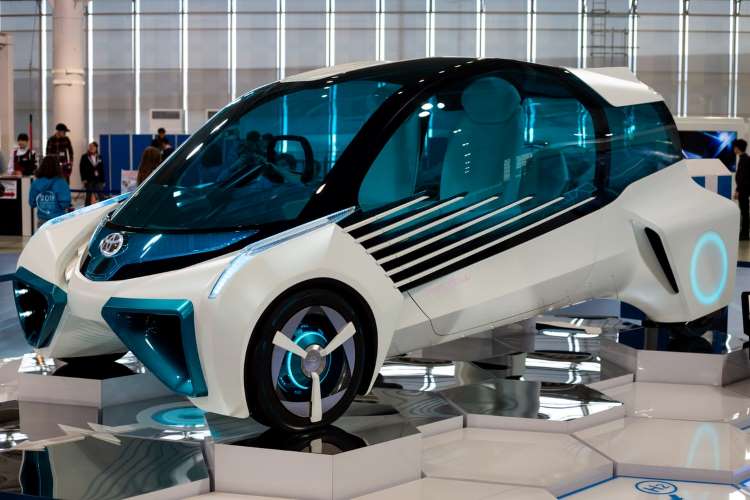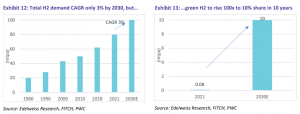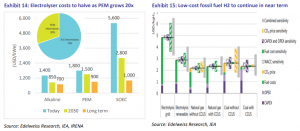
The world is racing against time to meet the net zero targets committed at global forums. Green hydrogen is touted to be the best bet to replace fossil fuels that emit greenhouse gases responsible for climate change. The developed countries and emerging market nations have announced plans to build large electrolysers or electrical systems that produce hydrogen from water.
Green hydrogen uses renewable energy to break water molecules to produce hydrogen. Hydrocarbon companies that look to become carbon neutral are pumping in money into clean hydrogen projects. They have a vested interest in delaying the shift to hydrogen to avoid the risk of stranded assets.
READ I Green hydrogen prices will crash to $1 per kg by 2030: Study
Green hydrogen prices to crash
Currently, green hydrogen prices are substantially higher compared with other sources of energy like fossil fuels. As more and more money is invested in green hydrogen technologies, the cost will come down drastically. Energy analysts say that before 2030, green hydrogen will become cheaper than most other sources of energy, including blue hydrogen and grey hydrogen.


Like in the case of other green technologies, China is emerging as the global leader in green hydrogen. Sinopec, China’s state-run oil company, has announced a 300-megawatt electrolyser project that will be completed in June 2023. The world’s largest electrolyser will produce 20,000 tonne of green hydrogen per year. This project is just one of the many coming up across China. Electrolysis is a key component of the cost of clean hydrogen. It is the process that splits water molecules into hydrogen and oxygen atoms. Production of green hydrogen is done using renewable energy sources.
READ I Universal pension can transform Indian economy
Cheap electrolysers to flood market
The electrolysers used to produce hydrogen use proton exchange membranes (PEMs) technology. This is a costly affair as the materials used in the process include metals such as ruthenium, iridium and platinum used as electrodes. Titanium, another costly metal, is used in separator plates. Anion exchange membranes (AEMs) is seen as a cheaper alternative to PEM technology.
Anion exchange membranes need alkaline conditions that do not need electrodes made of expensive metals. The materials used in AEM process are around 3,000 times less expensive. However, AEM is yet to be proven successful in commercial production of hydrogen and it does not last long.
A research team from the Korea Institute of Science and Technology recently announced a breakthrough in electrolysis with anion exchange membranes which are cheaper than the proton exchange technology. The team says the new technology is 20% more efficient. However, the team doesn’t provide any hint as to what will be the price of green hydrogen produced using this technology.
A great year ahead for green fuel
A recent Bloomberg NEF energy market analysis says 2022 will be a great year for green hydrogen. As businesses and nations rush to reduce their carbon footprint, green hydrogen investments are rising at an unprecedented pace.
The forecasts made by the report include a rapid increase in electrolyser installations for the production of clean fuel. It says clean hydrogen will become cheaper than blue and grey hydrogen before 2030. Blue hydrogen uses fossil fuel, engages carbon capture and storage technologies to cut greenhouse gas emissions. The report says Australia and China would be the sources of cheapest clean hydrogen before the turn of the decade.
The drop in the prices of clean hydrogen will make it the cheapest source of zero-emission energy. The report says electrolyser demand for hydrogen production will grow four-fold in 2022. The report predicts that the year will see new electrolyser capacity to the tune of 1.8-2.5GW by the year-end. China will account for two thirds of the global demand for electrolysers.
A recent Edelweiss report has highlighted India’s advantages in hydrogen production, saying the country has the potential to become the Middle East of hydrogen. It says the government’s consistent efforts and the competitive edge enjoyed by the country could make India the producer of cheapest green hydrogen in the world.
Sajna Nair is a former banker. Her areas of interest are environment, art and culture.

